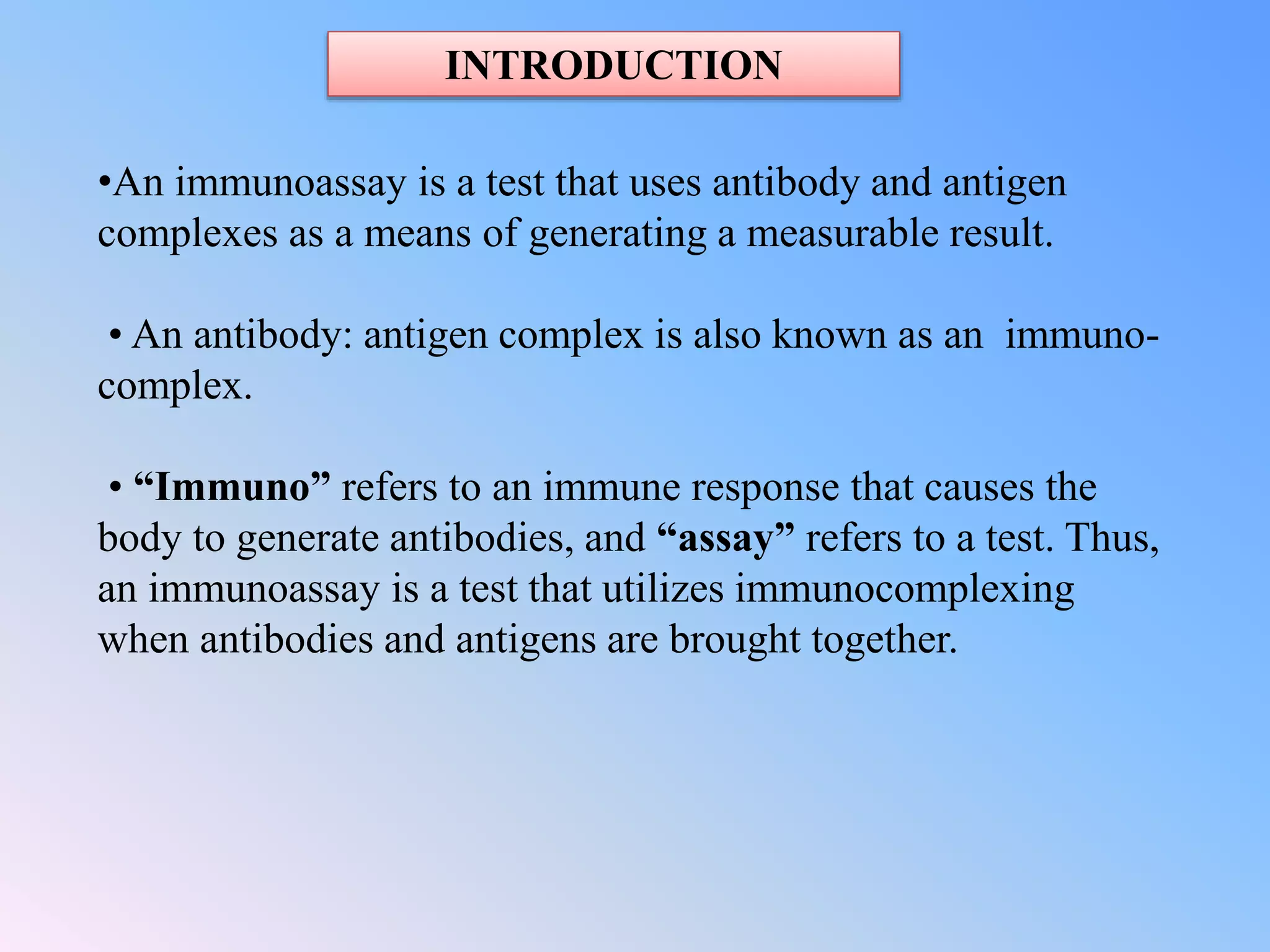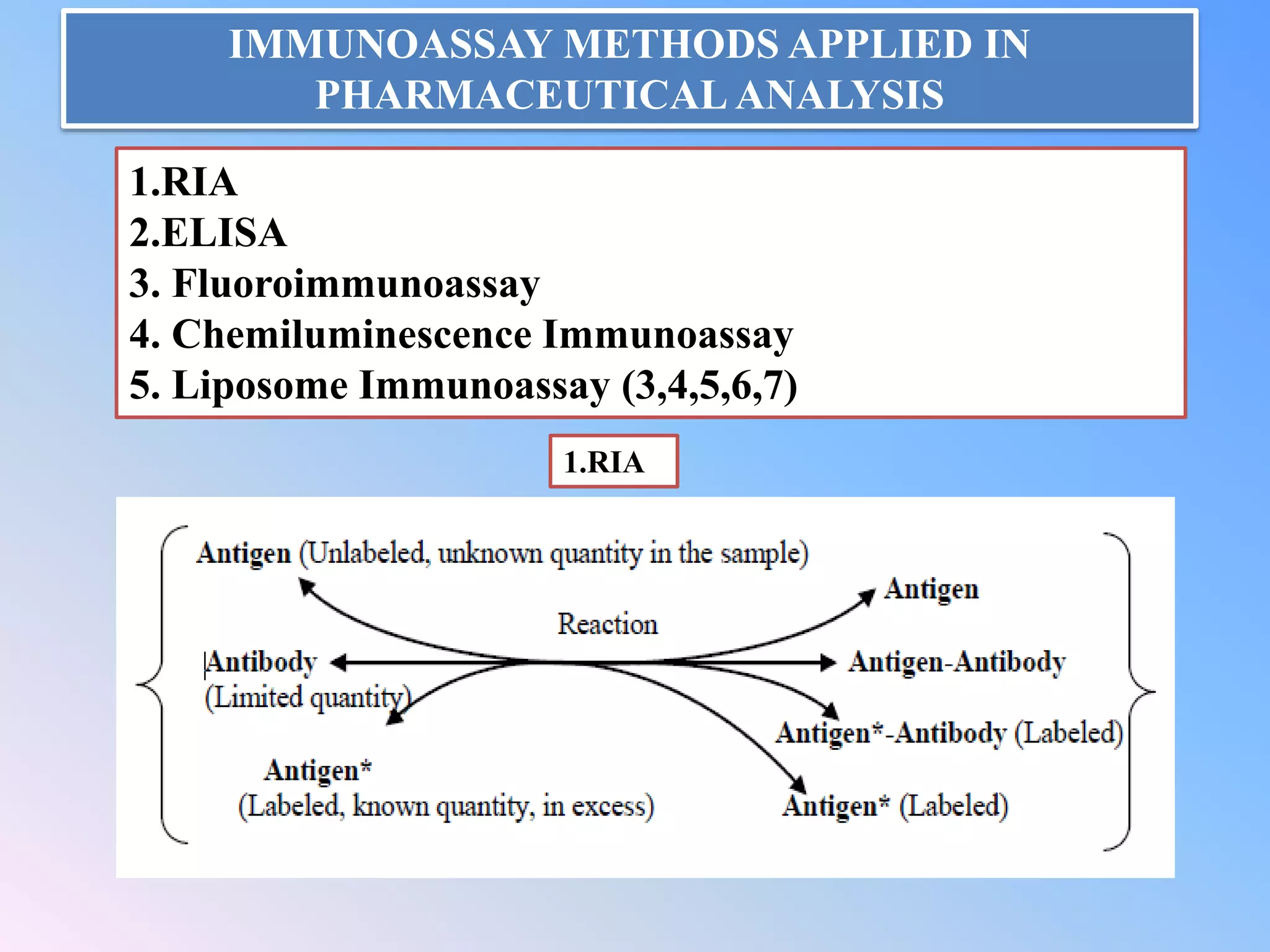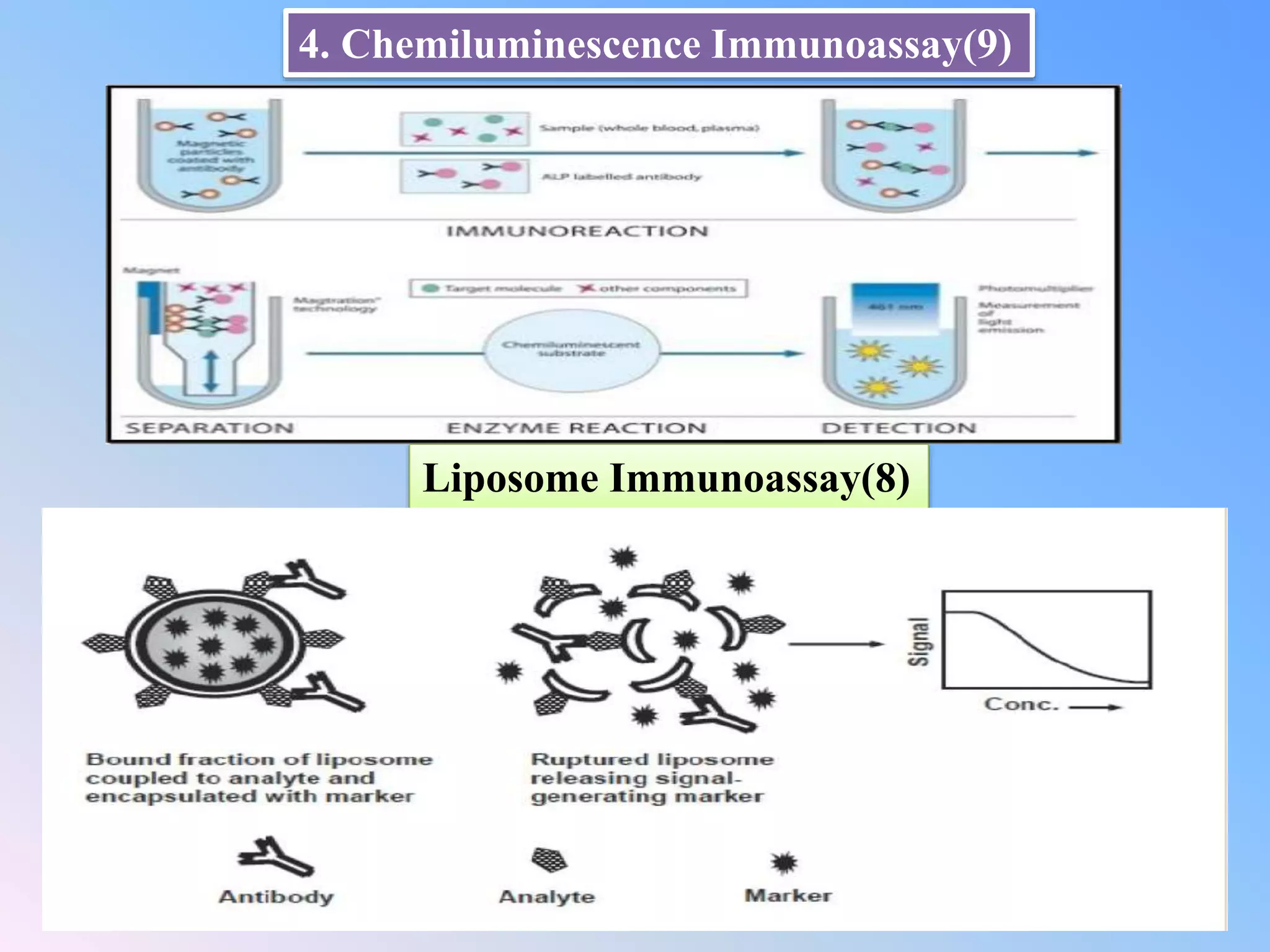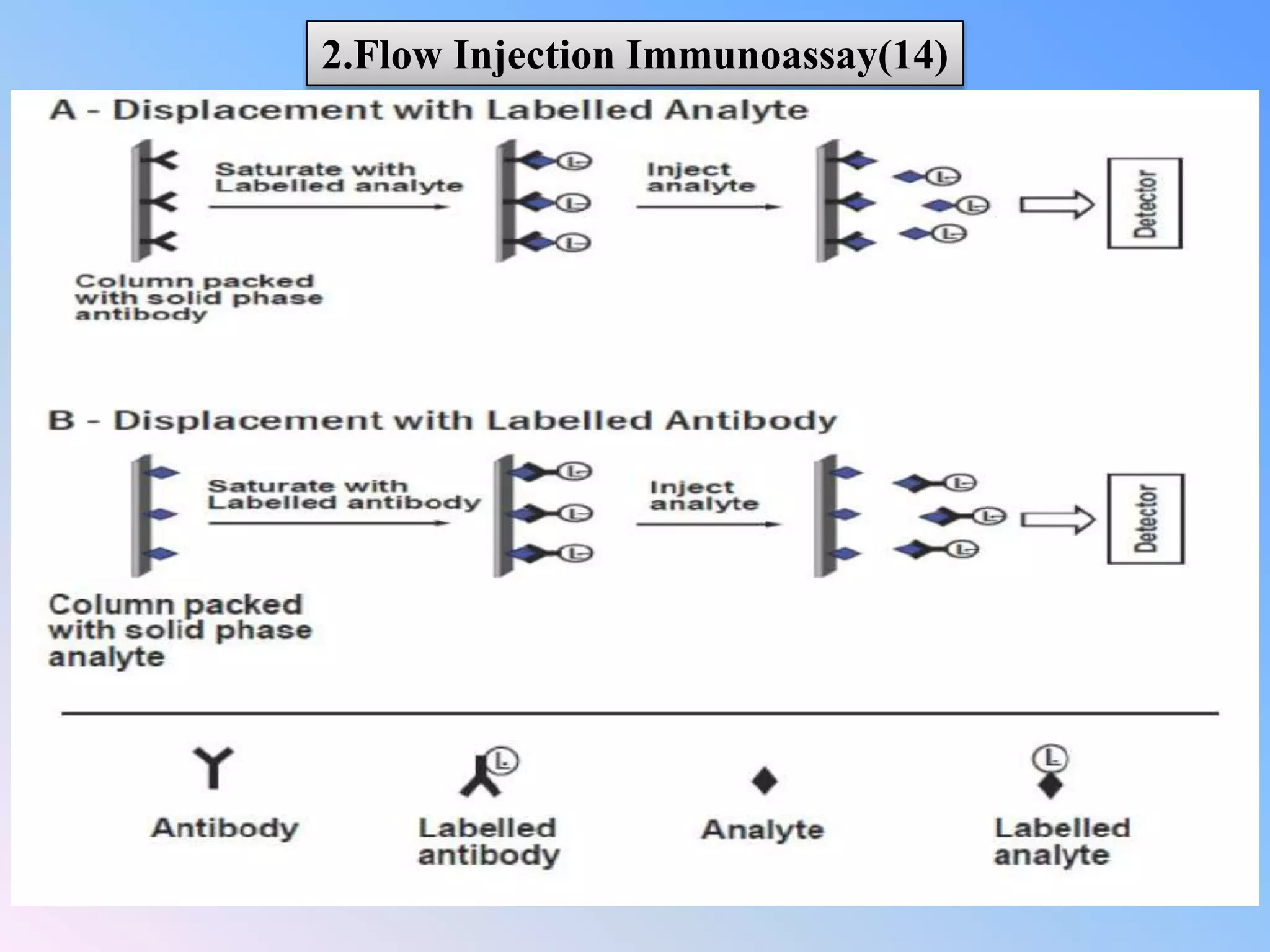This document discusses immunoassay methods and their applications in pharmaceutical analysis. It begins by defining immunoassays as tests that use antibody-antigen complexes to generate a measurable result. It then covers the basic principles, classifications, common immunoassay methods like RIA, ELISA, and advances in preparation, methodology, and instrumentation. Immunoassays are described as having wide applications in areas like disease diagnosis, therapeutic drug monitoring, and bioequivalence studies due to their ability to quantify a variety of compounds.


















![REFERENCES
1. Kellner R, Mermet JM, Otto M, Widmer HM. Analytical Chemistry. New York:
WileyVCH;1998.pp. 405–429.
2.Cirimele V, Kentez P, Lohner S, Ludes B. J. Anal. Toxicol. 2003;27:103–105. [PubMed].
3. Wheeler MJ. Ann. Clin. Biochem. 2001;38:217–229. [PubMed].
4. Chang YC, Li CM, Li LA, Jong SB, et al. Analyst. 2003;128:363–368. [PubMed]
5. Lynas L, Currie D, Elliott CT, McEvoy JD, et al. Analyst. 1998;123:2773–2777. [PubMed]
6. Blackwell LF, Brown JB, Vigil P, Gross B, et al. Steroids. 2003;68:465–476[PubMed].
7. 40. Kobayashi N, Katumata H, Uto Y, Goto J, et al. Steroids. 2002;67:827–833. [PubMed]
8.Rongen HA, Bult A, Van Bennekom WP. J. Immunol. Methods. 1997;204:105–133.
[PubMed]
9. Weeks I. Chemiluminescence Immunoassay. In: Seville G, editor. Vol. 24. Amsterdam:
Elsevier;1992. pp. 18–118.
10. Blake DA, Pavlov AR, Yu H, Khosraviani M, et al. Anal. Chem. Acta. 2001;444:311.
11. Blake DA, Chakrabarti P, Khosraviani M, Hatcher FM, et al. J. Biol. Chem.
1996;271:27677–27685. [PubMed].
12. Loor R, Lingenfelter C, Wason PP, Tang K, et al. Anal. Toxicol. 2002;26:267–273.
[PubMed]
13.Shindelman J, Mahal J, Hemphill G, Pizzo P, et al. J. Anal. Toxicol. 1999;23:506–510.
[PubMed]
14. Yang HH, Zhu QZ, Qu HY, Chen XL, et al. Anal. Biochem. 2002;308:71–76. [PubMed].
15. Zhang J, Heineman WR, Halsall HB. J. Pharm. Biomed. Anal. 1999;19:145–152[PubMed]
16. Wan QH, Le XC. J. Chromatogr. B Biomed. Sci. Appl. 1999;734:31–38. [PubMed]](https://image.slidesharecdn.com/immunoassay-190523150050/75/Immunoassay-methods-and-their-application-in-pharmaceutical-analysis-19-2048.jpg)
